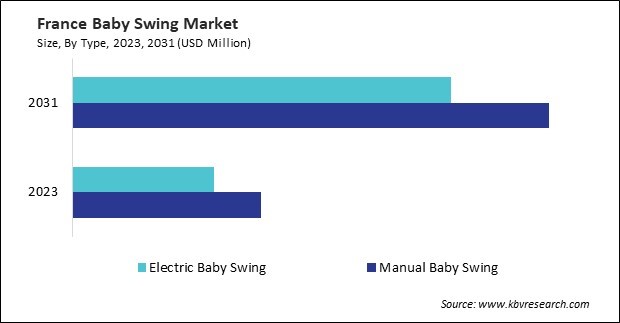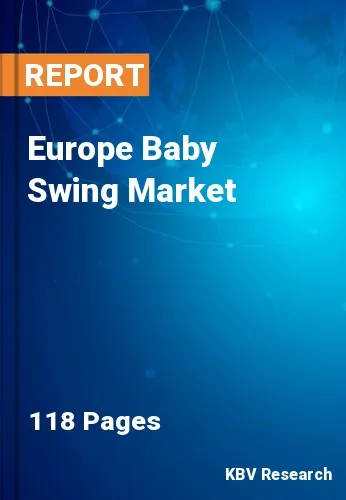The Europe Baby Swing Market would witness market growth of 12.7% CAGR during the forecast period (2024-2031). In the year 2021, the Europe market's volume surged to 11,871.8 thousand units, showcasing a growth of 11.9% (2020-2024).
The nursery application in the Baby Swing Market focuses on creating a safe, soothing, and engaging environment for infants and toddlers. Baby swings serve as essential nursery furniture, providing parents with a reliable solution to calm and entertain their little ones while promoting healthy sleep patterns. In a nursery setting, these swings often feature adjustable settings for swing speed and recline positions, allowing caregivers to customize the experience based on their child's needs. Hence, in Germany, 1,047.4 thousand units of baby swings is expected to be utilized in nursery by the year 2031.

The Germany market dominated the Europe Baby Swing Market by Country in 2023, and would continue to be a dominant market till 2031; thereby, achieving a market value of $797.1 Million by 2031. The UK market is experiencing a CAGR of 11.8% during (2024 - 2031). Additionally, The France market would witness a CAGR of 13.6% during (2024 - 2031).
Parents can create special bonding moments by incorporating baby swings into daily routines. Singing to the baby or reading in the swing can foster emotional connections and language development. Some baby swings offer adjustable reclining positions, allowing upright positioning after feeding. This can help reduce the risk of acid reflux and support better digestion for infants who need to remain upright after meals.
Modern baby swings can integrate with smart home systems, allowing parents to control swing settings via smartphone apps or voice commands. This seamless integration offers convenience and enhances the user experience. Baby swings can be a safe place for siblings to interact under supervision. Older siblings can engage with the baby while the infant is secure in the swing, fostering early sibling bonding and family dynamics.
The purchasing habits of European households are being significantly altered by this rise in disposable income, particularly among youthful parents who are more inclined to invest in products that improve their children's comfort and well-being. Manufacturers of baby swings can leverage this trend by developing eco-friendly products that align with the values of modern parents. Introducing sustainable materials and practices in the production of baby swings can enhance their appeal in urban markets, where consumers are increasingly inclined to support brands that prioritize environmental responsibility. In conclusion, the rising urbanization in Europe presents significant opportunities for the growth of the market.
Free Valuable Insights: The Global Baby Swing Market will Hit USD 12.7 Billion by 2031, at a CAGR of 12.9%
Based on Type, the market is segmented into Manual Baby Swing and Electric Baby Swing. Based on Application, the market is segmented into Household, Nursery, Hospitals, and Other Applications. Based on Distribution Channel, the market is segmented into Offline and Online. Based on countries, the market is segmented into Germany, UK, France, Russia, Spain, Italy, and Rest of Europe.
By Type (Volume, Thousand Units, USD Billion, 2020-2031)
By Application (Volume, Thousand Units, USD Billion, 2020-2031)
By Distribution Channel (Volume, Thousand Units, USD Billion, 2020-2031)
By Country (Volume, Thousand Units, USD Billion, 2020-2031)
Our team of dedicated experts can provide you with attractive expansion opportunities for your business.

